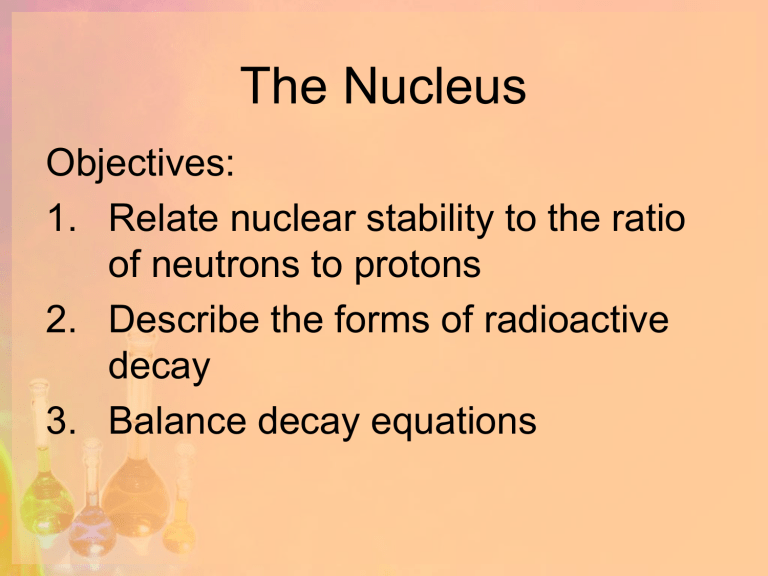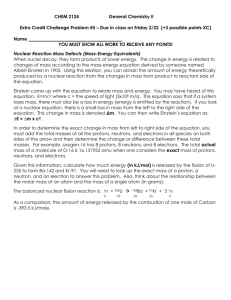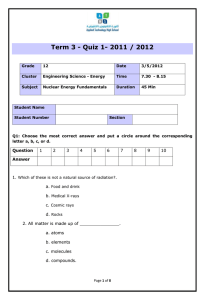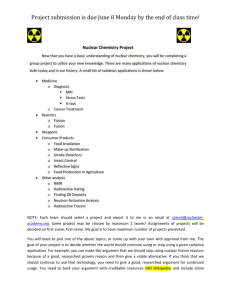The Nucleus

The Nucleus
Objectives:
1. Relate nuclear stability to the ratio of neutrons to protons
2. Describe the forms of radioactive decay
3. Balance decay equations
The Nucleus
Definitions: nucleonsprotons and neutrons collectively nuclidea specific atom (in nuclear chemistry) mass defect – difference between the actual mass of an atom and the sum of the masses of all of an atom’s protons, neutrons, and electrons
Nuclear binding energy – energy released when a nucleus is formed from nucleons (E = mc 2 )
Binding Energy per Nucleon
•Higher binding energy/nucleon
higher nuclear stability
Band of Stability
•Small atoms tend to have neutron-proton ratios ~ 1:1
•The ratio approaches
1.5:1 as the atomic number increases
•Explained by the relationship between strong nuclear forces and electrostatic repulsion
Nucleons and nuclear stability
• Strong nuclear forces act over very short distances
• As the # of protons increases, the electrostatic force between protons increases
• More neutrons are needed to stabilize the nucleus
Nuclear Reactions
Transmutation – transformation of one element into another
• Nuclear reactions occur when unstable nuclei undergo changes in the # of protons and neutrons in order to increase stability
• Large amounts of energy are given off
Nuclear Reactions
4
9
Be
2
4
He
12
C
6
0
1 n
• In nuclear equations, the sum of atomic #’s and mass #’s must be equal on both sides of the equation.
Complete the following nuclear reactions:
218
Po
84
4
He
2
???
253
Es
99
2
4
He
0
1 n
???
142
Pm
61
???
142
Nd
60






